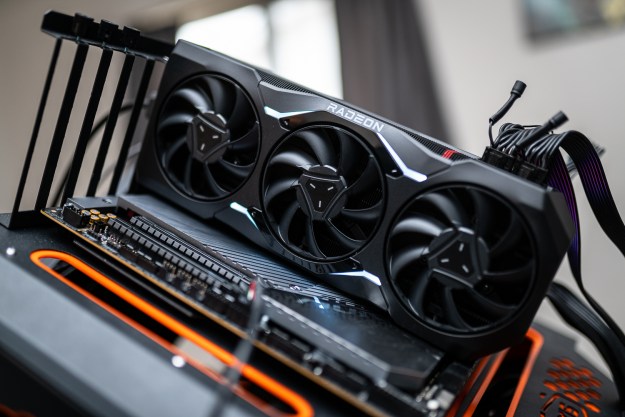If you were hoping to play Ratchet & Clank: Rift Apart on PC and you have an AMD graphics card, you might feel a little disappointed. It appears that ray tracing will be disabled upon launch, but only on AMD GPUs.
Why is ray tracing disabled for AMD cards, and when will it become available? Everything is a little vague right now, but here’s what we know.

The information comes straight from the source. Insomniac Games, the studio behind Ratchet & Clank, talks about various system requirements in this article, and while AMD cards are very much supported, ray tracing is not.
“Ray-tracing on AMD GPUs is disabled at launch. We are working closely with AMD to enable support as soon as possible,” says Insomniac Games.
Admittedly, that doesn’t really say much, although it does leave gamers hopeful that ray tracing might soon be an option for AMD, too. However, AMD itself sheds more light on the matter in a stealthy way — by talking about it in the release notes for its latest Adrenalin driver.
According to AMD, one of the latest known issues is that “application crash or driver timeout” can occur if you try to play Ratchet & Clank with ray tracing and Dynamic Resolution Scaling enabled. It’s unclear which graphics cards are affected, but AMD mentions its flagship Radeon RX 7900 XTX as one of them. AMD said that it’s working on resolving this problem, but it hasn’t provided any specifics as to when we might see the fix.
Of course, this doesn’t mean that you can’t play Ratchet & Clank on your AMD GPU — it just means that ray tracing won’t be an option. For some AMD users, this won’t matter at all, as some of its older GPUs really can’t handle
For now, if you want to enjoy the full Ratchet & Clank: Rift Apart experience at launch, you’re going to need an Nvidia graphics card. Nvidia has teased that the game will be available with DLSS 3, ray tracing, Reflex, and RTX IO on release day. AMD users will have to wait a little longer to see the game in its full glory.
This might not sound like a huge deal, but AMD’s troubled history with ray tracing has been noteworthy over the years in its attempts to keep up with Nvidia. Hopefully, AMD can get this figured out quickly because it’s a little strange that it’s only affecting AMD’s cards.
Editors' Recommendations
- I wanted to try AMD, but it’s making it hard for me to switch
- 3 reasons you should still buy an Nvidia GPU over AMD
- AMD is letting Nvidia win, and it needs to step it up before it’s too late
- Here’s how to get your free 40% performance boost from AMD
- Nvidia RTX 4070 Ti vs. AMD RX 7900 XT: Two odd choices for your next GPU




